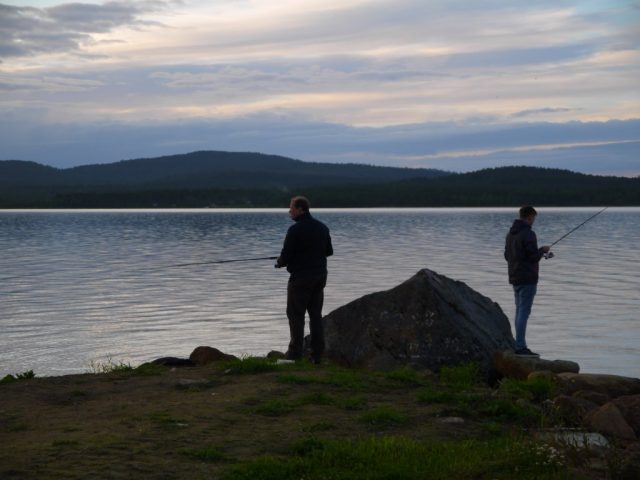The longest day of the year (most daylight hours, or summer solstice) in the northern hemisphere is on June 21st, give or take one day. If you want to see the midnight sun in Lapland, you don’t have to be in the region on that particular day, because the Midnight Sun entertains visitors and locals longer than one night. Here are a few tips for ensuring the perfect Midnight Sun experience.

When is the best time to see the Midnight Sun?
June 21st is the summer solstice date when the northern hemisphere gets the longest time of sunlight during a day. The longest day can be one day earlier or later due to leap year and time variation. The further north you are, the longer the time is when the sun doesn’t set.
On the Arctic Circle (roughly along the line Storjord – Jokkmokk – Rovaniemi), for instance, the sun doesn’t set between 12th June and 1st July.
On the Continental Europe’s northernmost point Nordkapp (North Cape), the sun is visible 24 hours a day from 14th May until 29th July.
Even if you can’t make it to the north during those dates, in the north the nights are not dark weeks before and weeks after the Midnight Sun dates. For instance, that last time I visited Nordkapp in late August, the large carpark was full of motorhomes waiting for the white night. The white night means that the sun sets, but sheds so much light that normal outdoors activities are possible, like hiking, golf, fishing, or picking berries.
How to ensure that the Midnight Sun can be seen?
The only criteria are that you far enough in the north, and the weather is clear for the sun to be visible.
Weather forecasts for towns and villages of Lapland can be viewed, for instance, at the YR web page.
Nordkapp maybe a popular destination for experiencing the midnight sun, but its weather is very unpredictable and often foggy. In general, weather tends to change in Lapland quite rapidly, so if today is cloudy and rainy, tomorrow can be sunny.
Where is the best place to view the Midnight Sun?
Anywhere with open views to the west and north. Popular places are fells, shores of lakes, or the seashore.
Photographers may prefer one place over another, for instance, how they expect the light to reflect from water, but for travelers who only want to enjoy the wonders of nature in Europe’s last large wilderness, I wouldn’t be so picky.
What about the Northern Lights (Aurora Borealis)?
In summer, there is too much light for seeing the Northern Lights. The phenomenon is active and the lights are there, but only in winter the nights are dark enough for us to see them.
The travel guidebook to Lapland (northern Sweden, Norway and Finland) covers the sights of Lapland, road travel, outdoor activities and wildlife above the Arctic Circle.
The following photos are from the Lapland travel guidebook.




